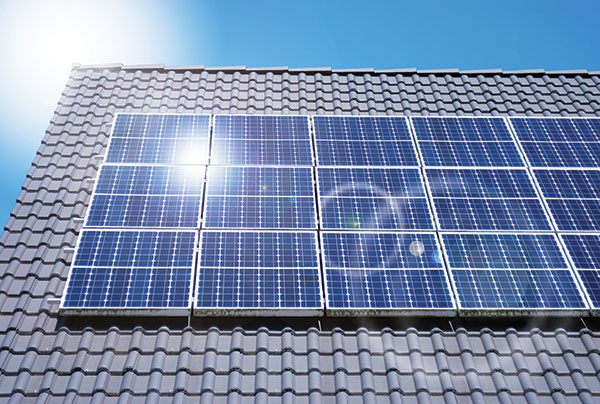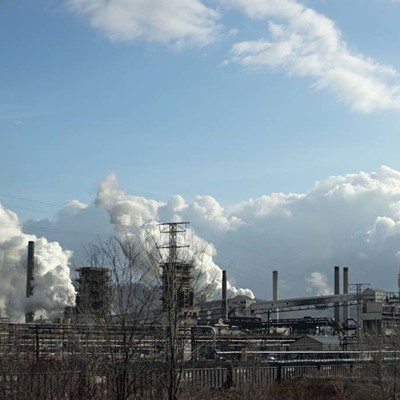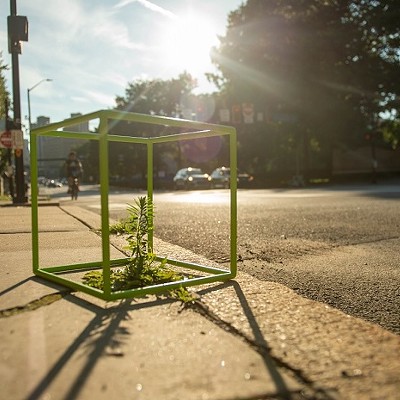Every day, it seems, solar energy creeps closer to fulfilling two promises on a grand scale: cheap electricity with a fraction of the environmental damage caused by fossil fuels.
The solar industry reports that 2015 was another record year for photovoltaic installations — and that new solar generation capacity outstripped new capacity fueled by natural gas. While Pennsylvania isn’t a top solar state, the trend was echoed in Pittsburgh when California-based solar provider SolarCity brought its no-money-down pitch to town in April.
The arrival of SolarCity boosts rooftop-solar prospects in a region where the largest electricity company, Duquesne Light, has 500,000 customers but just 350 with photovoltaics. Rooftop solar can cost $20,000 or more. SolarCity lets customers pay off new arrays over 20 to 30 years, with utility bills replaced by monthly payments based on how much energy their systems produce and the price per kilowatt-hour of solar electricity. SolarCity has 275,000 customers in 19 states, its website boasts. And Lee Keshishian, SolarCity’s vice president of operations for the East Coast, says the company (which began operating in Philadelphia a couple of years ago) is now doing 100 or more installations monthly in Pennsylvania. SolarCity hopes to start its first installations here in “weeks,” Keshishian told CP last week.
SolarCity’s expansion itself reflects a larger trend: ever-cheaper solar. According to the Solar Energy Industries Association, a trade group, installation costs for solar dropped 73 percent between 2006 and 2014. The technology itself costs less, and installations take a fraction of the time they once took: hours per home.
SolarCity isn’t your only option, of course. (It might not even be your best option: Customers who can afford the upfront costs might do better financially long-term to purchase solar arrays outright, observers say.) Local companies who do solar are also exploiting these new economies.
Solarize Allegheny, an initiative funded by the Heinz Endowments to double the amount of solar energy in the county, is a matchmaker for installers and customers. In 2015, its first year, Solarize Allegheny shepherded 32 installations, doubling the county’s 2014 total, says Solarize Allegheny’s Sharon Pillar.
Some local installers are reportedly irked by the arrival of nationally branded SolarCity. But Pillar, who also heads the Solar Unified Network of Western Pennsylvania, an advocacy organization, says, “I think there’s so much room to grow with solar that there’s room for everybody.”
How much room? In a report issued in January, the federal National Renewable Energy Laboratory estimated that by outfitting all viable rooftops with solar panels, the U.S. could generate the equivalent of 39 percent of its current electricity needs. That percentage varies by state: In California, it’s 74 percent, while in Pennsylvania it’s 34.5 percent. But almost every state could top 25 percent, says the NREL — and that’s just counting rooftop solar on homes and businesses, not utility-scale arrays, smaller ground-mounted photovoltaics or no-brainer retrofits like canopies over parking lots.
With electricity generation responsible for about 30 percent of all U.S. greenhouse-gas emissions, according to the U.S. EPA, solar’s potential for helping to reduce the effects of climate change is considerable.
But there’s a long way to go: Even after years of meteoric growth, solar remains responsible for less than 1 percent of all U.S. electricity generation (compared to 33 percent each for coal and natural gas), according to federal figures. Congress recently extended a 30 percent federal-tax credit on solar installations, but even so, industry projections have solar reaching just 3.5 percent of electricity generation by 2020.
What could help? States could require utilities to sell more renewable energy. Pennsylvania, for instance, will require that solar provide just .5 percent of electricity generation by 2021, compared to 4 percent in New Jersey, says Rob Altenburg, who heads environmental group PennFuture’s Energy Center; an upward adjustment could raise demand for the renewable-energy credits producers sell, whose prices have bottomed out in recent years. And PennEnvironment’s Adam Garber would like to see Pennsylvania legalize “community solar” — a catch-all term for the sort of joint ownership of photovoltaics that would make this resource more accessible still.















